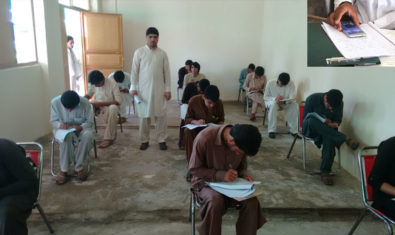With commercial banks and branchless microfinance players pushing forward their respective digital agendas, and the emerging DRB NOC winners getting ready and awaiting in-principle approvals, here are the top 5 predictions of what to expect in Pakistan over the next 3-5 years in this fascinating space that has the potential to change the lives of masses of Pakistan for the better.
Please note the scope of this piece does not include EMIs and NBFCs, and their contributions, as they will be the subject of a separate article.
Evolution Takes Time for DRBs
DRBs will likely focus on setting the right foundations, getting to operational readiness for pilots, and subsequently in the transition phase, prioritizing their shareholder customer segments & partnerships (representing distribution, agri, and youth organizations) as opposed to mass scale.
After all, Rome was not built in a day! While this may be a shocker to those who believe DRBs will move the needle as early as 2024, this time will be used to re-evaluate customer and profitability/valuation strategies, deal plans, etc. We may also see attempts for partial ownership changes (subject to approvals).
According to some reports, as of last year, over 90% of ‘Neo Banks’ globally had still not made an organic profit with breakeven points generally being between the 6-10 year mark. However, valuation /deal multiples have been high for such Neo Banks, especially in the US and Europe while in markets such as Africa, the premiums /deal multiples haven’t been as relatively lucrative.
This will also be a dilemma for the DRB NOC winners in Pakistan. The Policy rate, PKR USD parity, and other indicators were notably better when shareholders submitted license applications and the definition of ‘value creation’ will come under discussion.
The likely approximately Rs 4-5b needed at the operational readiness stage (Rs 1.5b MCR and Rs 2-3b outlay) will require both an understanding shareholders and a leadership team will a clear route to creating value. It will be interesting to see whether shareholders believe the global model of high valuation multiples and long periods of losses will be the route to follow in our bumpy economic climate, especially when the impressive Telenor ANT financial deal multiple is now widely considered to be a one-off.
Alternatively, and these are not mutually exclusive, shareholders could ask teams to shorten the break-even cycle, and focus on day 1-unit economics. DRBs can no doubt transform customer journeys and have the potential to innovate and scale financial inclusion, yet they too will inevitably have to address these questions, especially in their nascent years.
Pricing Pressure on Nano Lending
Likely ceilings on Nano lending pricing may be a blow to branchless banking microfinance players in 2024 which could mean the need for further support from telco owners. While also an opportunity to diversify revenue streams, regulatory interventions may also be needed to support these players who have tangibly scaled financial inclusion across the country and moved high digital volumes.
With draft regulations likely to cap the pricing of nano consumer loans, Branchless microfinance players may face margin pressures in 2024. Such draft guidance has so far not included DRBs in their scope, yet I do expect applicability to them as well a year or two after the others. Let’s not forget that nominal IBFT fees, nano lending revenue, and float revenue on customer deposits are two main drivers of the financial viability of these players, players who have played a large role in scaling inclusion and moving high single digit of Pakistan’s GDP in payment volumes. Recently these players have
reduced customer acquisition spending and the ‘customer washing machine effect’ with an enhanced focus more on customer engagement. More of this can understandably be expected.
Harmony in Commercial Banks’ Digital Asset Strategies
Commercial banks’ digital banking assets will scale, with such banks moving more of their ‘existing’ business to digital assets with a ‘digitizing the core’ focus. While there will still be battles between digital and non-digital segments, I do anticipate somewhat improved harmony and execution.
Even though the cash cow of commercial banks will most definitely be elsewhere, I do expect more harmony in how commercial banks approach digital banking. Digital banking of such Banks will still be challenged to stand on their own two feet and what we are likely to see is an increasing focus on such digital assets supporting core business.
I don’t believe that the “separate wallets strategy” for digital customers and branch customers of such commercial banks will continue on a widespread basis. Onboarding large numbers of ‘new to bank’ customers (especially in lending) directly on digital assets of commercial banks though, may still be a while away.
Emphasis on Governance and Security
As digital platforms are developed and scaled, it would be naïve to underestimate the importance of robust governance and control processes.
DRBs for instance, are required to comply with the Code of Corporate Governance for LISTED companies, and as start-up banks, they will need to start preparing for this from now on. The importance of good governance practices, risk management practices, internal controls over operational processes, financial reporting and especially customer data privacy and protection, cannot be undermined for DRBs, Branchless players and Commercial Banks alike.
We may see some hiccups here in the overall ecosystem, which is natural on such journeys, yet the key will be to avoid catastrophes.
Enhanced Customer Journeys and Innovation
Of this I’m sure. Be it trial and error, a push due to competition or innate ingenuity, digital retail banking in Pakistan will get better for the benefit of Pakistanis over the next 3-5 years. DRBs, branchless players, and commercial banks will all continue to play a pivotal role in better customer journeys, experiences and also impactful and innovative use cases.
Who will take the cake? Well, that really depends on who better can combine a customer lens with unit economics, and leverage data holistically AND granularly. I believe there are many opportunities to be pursued both at a strategic and operational level, with some examples below:
- Sharia-compliant digital banking will be a significant driver – banks cannot continue to ignore what customers are demanding, and the ability to execute with authenticity will be key;
- Transactional wallets as opposed to “cashback-based wallets” – use cases that help customers stay engaged and keep funds in their wallets can help with much needed respite in terms of cost of funding and a better CASA ratio;
- Digital lending through closed loop B2B2C lending will be important – any claims of credit scoring models being perfect for SME lending at scale from day 1 should be taken with a pinch of salt. Banks would be better advised to approach this by partnerships with FMCGs, and other businesses that engage with and maintain MSME/SME data. With the right permissions from the end MSMEs/SMEs, the right data sets, and a focus on customer hypothesis testing and feedback for product development and journeys design, this can be used by banks to pre-credit score, grade and price lending products for small businesses that are part of a larger business network. This will in turn help reduce risk, enhance quality of MSME/SME lending at reasonable prices and also improve, in time, the accuracy of a Bank’s credit scoring model;
- Truly understanding customer & segment needs. A design and research leader once said to me that it would be a surprise if digital banking leaders assumed they understood what SMEs / youth / women /freelancers /expats /farmers/ and other segments actually wanted! He was right. Its imperative that data be leveraged into insights and combined with robust customer testing to go beyond the surface of customer needs, rather than just a ‘product first’ strategy.
- Commercial banks and Branchless players are often judged on the speed of customer onboarding, lack of one stop shop corporate portal solutions (big opportunity!), partner integration processes and card delivery processes. The perception of DRBs will likely be based on the same, atleast at the start. It will be important to focus on what drives customer perception and also the need to be an engaging brand, being truly there for customers, as opposed to just maintaining a transactional relationship.
- Voice and location-based customer use cases will make customer journeys simpler and improve adoption. With all the fuss on text, let’s not forget that voice to text services can move the needle for adoption in Pakistan, much as voice devices in India are starting to play their part. Similarly, location-based services helping customers with the best offers and services, based on where they are, could be a great value add; Customer feedback will be key.
- Banks with digital ambitions need to choose embedded finance partners & customer use cases with care and vice versa! Be it fractional gold savings, digital committees, advance salary, insurance, personalization or agritech. While such partners may promise much, not all may deliver and this can come at the cost of time, resources and customer trust. TBH, this is equally true of some banks dealings with embedded players. Banks on digital journeys will need to either choose the embedded platforms and customer use cases with care, or commit to taking a deeper strategic position in their development;
- There is a telco (or two) without a robust digital financial services play. While this is a strategic call of such telcos, their significance as a potential scale partner for banks with digital ambitions can’t be underestimated.
About the author: Sardar Abu Bakar was COO of Mobilink Microfinance and joined Raqami and was tapped as CEO few months ago. He has left Raqami end of July.























Very well written.. Raqamis loss..